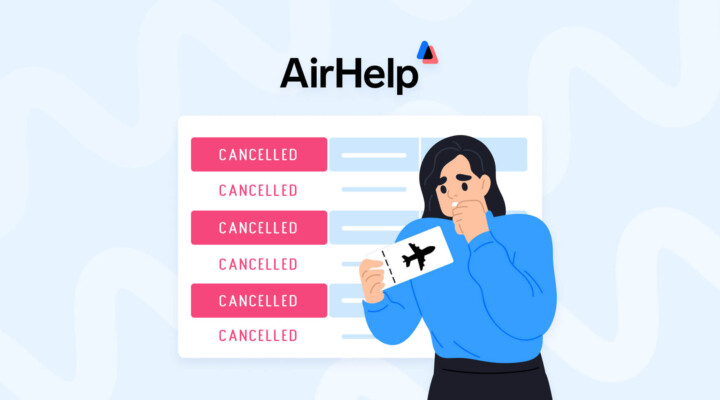Lately, private blog networks (PBN) are a key point of Google’s interest. It haunts them, and they deindex a lot of websites daily. Even though the PBN business is quite risky, the network may be the source of a high income. All you need to do to reach the desired profit is to create a PBN network according to the well-defined rules.
In this article, you will find the information on how to deal with PBN network creation, to run your business successfully and save yourself from a fail. Here, you can find out about dropped domains and how to find them. Additionally, you will extend your knowledge on what to draw your attention to when validating websites and learn what the Web Archive is and how you can use it for website backup. Information about how to monitor the website, create the content, buy domains and host is here for you as well. So, let’s go!
Dropped domains and their role in creating the PBN
First, let us reveal what dropped domain is. When the web store owner buys a domain name, there are defined terms as to when this website will be active. If it’s not used for a long time, or an admin simply forgot to renew the registration, the domain gets a dropped status and can be registered to someone new.
In some cases, a dropped domain is a treasure, as you get the opportunity to have a domain with the backlinks already included. It’s all about quality links. The more the website has had, the more useful it will be for your PBN network. Additionally, the links should meet the general requirements and demonstrate high quality to positively influence your network.
How to find a domain for private blog network
Looking for domains for your PBN is not a piece of cake. You need to go through the myriads of various URLs and check which links are already forsaken. It’s hard to believe, but this process required manual checking just a few years ago, and only a bit later did a limited number of tools become available. Now, the market is full of different tools that can do this for you. All you need to do is pick a trustworthy instrument and delegate the task to it.
We would like to draw your attention to some of them:
- DomCop. The DomCop service provides you with a list of the expired domains, along with their metrics. Filtering and sorting features make this tool special and useful.
- SERPDrive. This tool demonstrates high efficiency and suggests convenient pricing conditions: A user pays for one crawl and gets the information about all the detected domains.
- PBN HQ. This is a whole service that provides information about a domain with nice metrics. Additionally, the tool provides spam-checkresults.
- WhoIS Domain Lookup. WhoIS database is a huge listing of registered domains. This tool allows you to check whether the domain is available, find out if there are trademark or rights violations, detect fraud and fight it, etc.
- Domain Ronin. If your main interest is in metrics, you can use this tool for your purposes. You do not even need to have your own account on this website to get the necessary information.
Things you should know about domain validation when creating a blog network
After the suitable domains are found, the next step when creating a blog network is the validation. Google continuously and attentively looks through suspicious domains. Dozens of up-to-date tools study website rankings and penalize those which do not meet the strict requirements.
You need to know for sure which links need to be removed and which will get you higher in Google’s ratings. This is where a link profile analysis is useful. What are the cornerstones of the analysis?
- Contextual linking. It’s crucial to create backlinks that are organically connected to the website. This means that a coffee machine web store should link to other eCommerce websites, but not to an IT blog.
- Anchor text. Google detects toxic websites if the links include non-branded keywords, making it obvious that they were paid for.
- Domain names. Google tools have the ability to reveal if the website uses a subdomain or manipulated domain for fraudulent purposes.
- URL structure. The next point of link profile analysis includes the specifics of the URL structure. The structure is a great source of information to identify link farms.
The status code provides the ability to categorize the links quickly and easily. Error 404 or 500 informs readers that content cannot be viewed. It’s better to flag those links or delete them to keep the website alive.
- Links from blogs. Links from guest blogs may be a red flag for Google. Those links are distinguished as sponsored or spammy and attract undesired attention.
- The domain and hosting. A big number of links to foreign websites may look suspicious. Unless there is a contextual reference to those websites, Google may recognize it as a feature of a link farm.
Specific Google tools and algorithms will continuously check the website, analyze the activity — and what is even more important — keep a digital eye on linking. To make sure your websites pass the validation successfully, you should always be aware of the points mentioned above and implement safe practices on the web pages.
Web Archive: How to use it in 2019 for PBN
A long time ago, in a galaxy far, far away there was a place where all the data about websites was stored. Well, that’s not quite true. It has not been that long ago (since 1996), and it was not in another galaxy (just San Francisco) that the Web Archive started carrying out its great mission. This huge digital library contains information about all the websites, web software apps, online games and content that have existed. The WebArchive gains the information about archives and versions and it provides free access to data that you can use for your purposes, even in 2019.
Web Archive analysis allows you to detect the digital material and website information that may be useful to build a PBN network.
How to backup a website from a private blog network?
If you want to back up any of your websites, that won’t be a challenge. The Wayback Machine enables this operation and provides the opportunity to save the digital achievements of our times for future generations.
Wayback Machine crawls the chosen websites and archives them. This is the main element of the Web Archive non-profit product.
Public accessibility of the web pages is one of the main requirements for that. The tool cannot access web pages hidden behind passwords or stored on private servers. The content from the backup version can then be easily copied and used for your purposes, or the whole web solution may be recovered.
What steps to take to prepare for the backup?
- Make your website accessible by choosing the appropriate settings;
- Go to the Search Engine Visibility section and uncheck the line “Discourage search engines from indexing”;
- Save the changes.
Take note: If you have plugins with similar functionality installed, it’s necessary to activate the necessary settings.
When everything is done, backup your website with Web Archive using these two methods:
| Manual backup | Automatic backup |
| 1. Delete http:// or https:// from the beginning of your website address. | 1. Go to the Web Archive page. |
| 2. Type web.archive.org/save/ in front of the URL | 2. Find the “Save Page Now field.” |
| 3. Enter the needed URL | |
| 4. Click the Save button. |
The process may take anywhere from a few seconds to a few hours — it depends completely on the size of the web pages. When it’s completed, you will get the link to the backup version. Some cases require more time, so you will be able to access the backup website in a few days.

How to build new content for a private blog network soldier
It’s crucial for your website to look as legit as possible. This point is often forsaken or abandoned by many people, and this mistake leads to failure. Even though your website was created for link building, it should not be so obvious. Content on your PBN website makes a difference. It’s necessary to have at least two to three web pages containing useful information or articles. Those pages may include About, Events, Advertising, FAQ, etc. Use your creativity to name them and empower your positioning.
Choose the person. First, you must decide who should be behind all of this. The author’s role defines what kind of content is posted on the website.
Define your writing style. When you know for sure who the author is, and the detailed portrait of this person is built, you can define the type of content, its style and specifics.
Compose it organically. It’s necessary to carefully combine the previous points and make the website look natural. For example, your author is a traveler that posts funny stories about their trips. The stories are followed by amazing pictures and live photos. Or, you might want your author to be a teacher. So, you post some educational tips in a formal, strict style.
Try to avoid the following details on your website:
- Real personal information;
- Financial and transactional information;
- Offers connected to health care;
- Tips on vital decisions;
- Legal advice;
- Expert opinions.
Take note that a blog of a fake person may empower your PBN network. But, it’s crucial not to violate other people’s rights and to keep your actual personal details safe.
There are five types of blog posts, and you can pick any of them:
- Introduction post. It may include videos, images, text and general information about the website. For example, who is the author and what is the purpose of this web channel?
- Infographic posts. These posts usually include an infographic element with a brief description and laconic conclusion.
- Video post. Such posts speak for themselves. A video clip dedicated to a certain topic with a catchy name and description will look great on the website.
- Photo gallery. This kind of post is not as simple. You should keep the copyrights in your head and accompany them with some text.
- Web article. This type of text content should include a number of words (try to stick to an average size of about 700 words) and highlight the topic.

How to monitor all PBN websites
Website monitoring may be a piece of cake if you use the appropriate software. Fortunately, there are a lot of tools you can use to your benefit.
- ExecPBN. This software tool lets the users manage the PBN websites, provides them with detailed analytics and minimizes the footprints and risks.
- PublisHUB. Use it to import an unlimited number of networks, track anchors, keywords, texts and ratios automatically and simplify your work considerably.
- PBN Premium. This tool is featured with an extra convenient dashboard. It reveals domains, provides the user with SEO metrics and offers many other useful features.
How to buy domains for a private blog network?
There is nothing complicated about buying a domain. But, if there are some newcomers among our readers, we have some significant tips on how to fulfil this task in the simplest way:
- Find the dropped domain according to the instructions we provided above;
- Pick the website that sells domain names;
- Sign up;
- Pay for the domain;
- Get a new website domain for the PBN network.
When looking for a domain, keep in mind that it should be old, and already used for the existing website. Choose a domain with a reliable, transparent history and avoid those that are under sanctions. So, before buying a domain, conduct research on its past. Choose one with a clean link profile and only add a trustworthy one to your network.
Access to the domain should be limited. Additionally, register no more than three different domains to one user’s account. You can use the WhoIS Protect tool to hide information about the real owner.
We conducted research to inform you about the places you can buy domains.
- GoDaddy. GoDaddy manages most of the domain names worldwide. Here, you just enter the domain name in the necessary field and complete the transaction.
- Hostwinds. This is a very user-friendly domain name registrar. The website provides users with clear information about prices, process, renew procedure etc. Live chat and technical phone support is among Hostwinds’ advantages.
- SnapNames. This is an entire marketplace you can go to when you need to buy a domain name. Its best feature is that you can filter to find only the domains that currently belong to somebody. Over three million satisfied customers prove its reliability.
Buy your domains from different registrars to keep the PBN network safe.
Types of hostings and how to buy them
No one should know that you are the person that owns all the domains, so it’s important to assign them to different hostings. The first step is to find out which type of hosting suits the PBN network.
- SEO hosting. SEO hosting is a place where you can manage all the websites. This used to be the best option for PBN. But, Google turned its digital head to blog networks, and SEO hosting suffered the most.
- VPS hosting. VPS hosting maintenance requires some technical skills and costs a lot. C class IPs are the best for blog networks. There are many network participants in A and B class IPs, and C class requires a limited number of addresses. C class IPs will require additional payment.
- Shared hosting. This is the best option for PBN now. It’s rather cheap and easy to manage. Besides that, the maintenance is simple.
When choosing the hosting for your private blog network element, pay attention to the following significant points: Location, services provided and support. We shortlisted the hosting that best meets requirements and can lead you to achieving the goal: BlueHost, FatCow and GreenGeeks.
The purchase process is simple. You follow the usual steps: Registration, payment and getting the hosting.
Final thoughts on creating a safe PBN
A private blog network in 2019 is not something that is dangerous or abandoned. If you know how to build a private blog network and pay attention to all the risky points and pitfalls, you may strengthen your position and keep your websites from being deindexed or blocked. Keep calm and do your best to reach your desired height!





